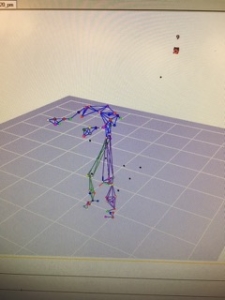Since I began my work in aging, eldercare and long term care planning over 20 years ago, I have signed up as a healthy control for countless geriatric research studies, including those concerned with:
- OTC medications such as glucosamine and their effect on knee arthritis and other conditions
- Bone structure, muscle and tendons of the ankle in relationship to diagnosis and prevention of fractures
- Walking while listening – the impact of hearing and listening on safe mobility in older adults
- Brain studies to better understand Alzheimer’s disease
- The relationship between bone marrow in the knee joint of postmenopausal women and knee pain and dysfunction
- A better understanding of apraxia (loss of ability to use tools due to stroke disease) in order to improve current methods of management and treatment
- Acceptability of self-driving cars among older adults
- How people use visual motion information to judge the direction of their movements
- How the brain uses information from hearing and vision to understand events
- The difference between older and younger adults’ associative memory (the ability to learn and remember the relationship between unrelated items)
- Whether hearing loss affects ability to perceive motion speed
My father suffered from dementia and stroke disease, which affected his ability to live safely and independently. He also was not able to perform the Activities of Daily Living which include bathing without assistance. As a result, I am very interested in the research to develop assistive devices which allow seniors to help look after themselves safely and independently. Last May I was asked to participate in a study that looked at handrails in the bath to support challenging bathtub tasks. The basic question: is it safer to use a bath seat with a grab bar, rather than just a bath seat with handles? The research was also testing whether risky movement patterns during bathing can be identified using wearable devices. Finally, this research may inform whether bathroom changes need to be made to the national building code.
I gave up an afternoon to be wired up and then digitized (see photo); the computer was able to understand the forces I placed on the grab bar as I sat, moved around on the tub’s (purposefully) slippery surface and stood in the tub holding the grab bar (see photo). It was fascinating to see my movement digitized which told the researchers my risk of slipping and how much stress was being placed on my body during the activities I was asked to do in the tub.
What I have I been subjected to in the name of research? You name, I’ve gone through it—blood tests, countless cognitive tests, basic fitness/balance tests, hearing tests, vision tests, X-rays, CT scans, ultrasounds, MRIs and PET scans.
Many studies paid me nothing for my time or expenses; others paid for my meals, parking or transportation and a few paid me minimally by the hour for my time.
So why do I give my time to geriatric studies?
- I love to learn—am endlessly curious
- I am fascinated/worried by the aging process which I am experiencing
- I want to know more about how the body and the brain age
- I have received excellent ancillary health care when appropriate as related to the study
- I want to see improvements in both health care and technology to enable seniors to age successfully
- I want to age as well as I can, using knowledge gained from these studies
- I want to give back to the system as a thanks for the excellent health care I have received in my life—and hope to continue receiving
- Finally, I want to be better at my job—helping aging Canadians and their families cope more successfully with the physical, social, financial and cognitive challenges of aging


